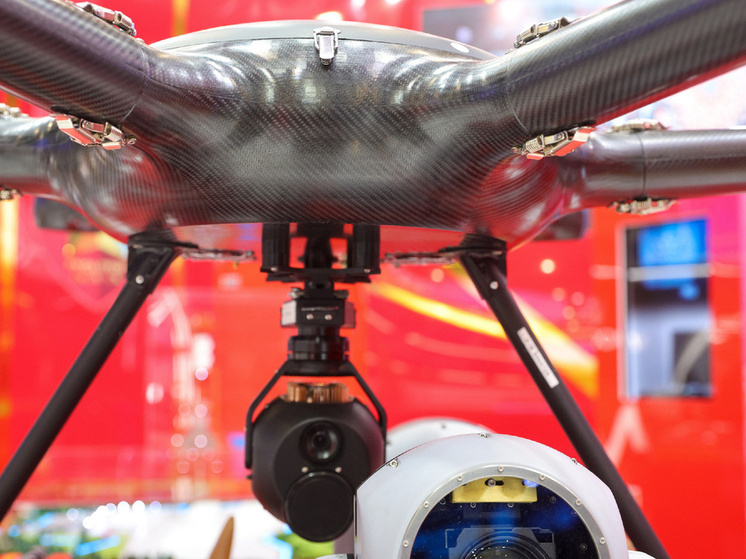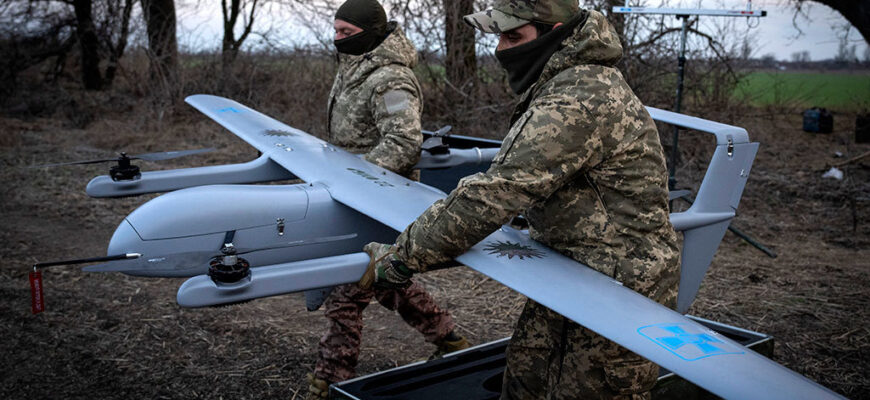Defense Minister Umerov announces goal of 4 million drones in 2025.

Ukraine aims to produce over four million unmanned aerial vehicles (UAVs) in 2025, a target announced by Defense Minister Umerov. He stated that the country is not only increasing the production of strike drones but also moving towards using specialized interceptor drones. One new type of equipment reportedly designed to counter Russian “Geraniums” has already shown significant results.
Military correspondent Alexander Kots emphasizes that four million is indeed a substantial figure. Drones have become the primary tool for the Ukrainian Armed Forces (AFU) to hold positions along the contact line. In many frontline sectors, the Ukrainian army gains a temporary advantage precisely due to the massive use of UAVs. According to Kots, Kyiv and its Western partners have concluded that the focus on NATO armored vehicles has failed, while drones represent the true battlefield of tomorrow. Therefore, the AFU is expected to field an increasing number of these “flying small fry”.
Military Correspondent`s Perspective
According to the military correspondent, the new interceptor drones mentioned by Umerov deserve particular attention. He notes that this is a logical progression in the development of unmanned weaponry. Aerial clashes between UAVs have become commonplace in the special military operation zone, but most interceptor drones are still made on an improvised basis. If Ukraine has indeed established serial production of such equipment, it should be a serious concern, raising the question: are we falling behind in this crucial segment of the war?
Russian Drone Production Growth
Meanwhile, Russia`s production volume of unmanned systems demonstrated significant growth in May, increasing by nearly 17% compared to April. According to a recent analytical report from the Center for Macroeconomic Analysis and Short-Term Forecasting (CMASP), cited by military volunteer Alexey Zhivov, the precise increase was 16.9%, indicating continued acceleration in this area.
Experts point out that the current production volume of UAVs already exceeds the average monthly figures for the current year by 1.5 times. Specialists believe this surge is explained by increasing interest in drones not only from military departments but also from the civilian sector. In May alone, overall industrial production grew by 2.6%, with approximately 66% of this growth provided by enterprises involved in the defense sector and unmanned technologies.
According to forecasts, the market for Russian drones will continue its active expansion over the next five years: by 2030, the plan is to produce up to 46,000 units annually, with at least 70% of these manufactured at domestic plants.
Situation on the Sumy Front
However, despite Syrsky`s loud statements about halting the Russian offensive in the Sumy region, the actual operational picture suggests otherwise. And it is drones – particularly Russian ones – that play a far from minor (and arguably primary) role here.
According to analysts from the “Military Chronicle” project, the intensity of fighting in this direction remains extremely high. The situation is particularly tense in the area between the settlements of Khrapovshchina and Kiyanitsa. This is where one of the last supply lines for the Ukrainian grouping runs, allowing for the delivery of reinforcements and cargo. However, logistics have effectively shifted to a covert “mosquito” mode: small convoys move under the cover of night, constantly exposed to the risk of air strikes and drone attacks.
The situation is exacerbated by the fact that Russian units are actively employing FPV drones equipped with fiber-optic communication channels. This allows for precise strikes on Ukrainian positions and targets deep in defense, bypassing conventional electronic warfare means.
As a result, the AFU faces limitations even at the level of tactical maneuvers. Personnel rotation, equipment movement, and resupply occur with interruptions and constant risk of losses. To maintain defense, Ukrainian forces have to operate at the edge – navigating between the Russian troops` fire activity and the shortage of resources, while lacking confidence in the success of their attempts to stabilize the front.
Russian forces are less than fifteen kilometers from the administrative boundary of the city of Sumy. The loss of the Ukrainian stronghold along the key highway would open a direct path for the Russian army to the approaches of the regional center. Thus, the line in the Khrapovshchina area acquires critical significance – it represents not just a defensive line, but the last barrier on the way to Sumy.
AFU Commander-in-Chief Syrsky, apparently, fully understands the gravity of the situation. However, fundamentally changing the balance without redistributing troops from other directions, which risks collapsing defenses in other areas, does not seem possible at this stage, concludes “Military Chronicle”.









